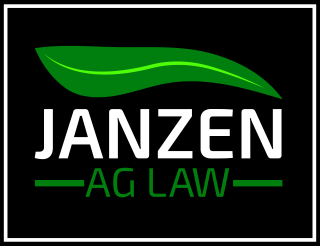Court Rejects Challenge to IDEM CFO Approval Based on Perimeter Tile Drain
/The Office of Environmental Adjudication (OEA) has rejected Hoosier Environmental Council’s (HEC) challenge of the perimeter drainage tile system at a hog farm in Delaware County. A copy of the decision is available here.
HEC represented eight petitioners who appealed Rhett Light’s IDEM CFO approval permit. We represented the Light family. After significant discovery and motion practice, the matter was tried over the course of three days in November and December 2018. HEC’s witnesses included one petitioner, an IDEM geologist (Andy Najafiarab), an IDEM engineer (Leila Trebelsi), and its expert, Dr. Kyle Doudrick from Notre Dame. Our only witness was Dr. Michael Veenhuizen. IDEM called the CFO section chief (Joe Williams) as witness.
Petitioners raised three issues at trial: (1) Light did not submit enough information about the perimeter tile drain to allow IDEM to determine whether the design would work; (2) the application did not include enough information about the use of a berm as an alternate compliance approach; and (3) manure application on fields will cause contamination and/or violate federal stormwater rules.
Most of our time at trial was focused on the perimeter tile drainage system. Petitioners argued the application should have included more information about the system, including additional soil analysis, peak flow volume, and compliance with NRCS Standard 606. IDEM’s regulations do not require an applicant to submit this information, but Dr. Doudrick opined that there was no way for IDEM to confirm whether the tile would work without this information. Dr. Veenhuizen explained how the application met the regulatory requirements and pointed out IDEM’s engineering staff could confirm the system would work by doing its own calculations based on all the measurements and variable provided in the application. The application included the depth, location, slopes, size, and soil types and properties in which the tile will be located, and identifies the seasonal high water table location. The application also included information about the tile outfall, collection sumps, pump, and shut off valve. The Court agreed with us that the information Light provided in the application met the IDEM requirements. See 327 IAC 19-7-1; 327 IAC 19-12-4(o); 327 IAC 19-12-2(a)(5).
Petitioners also argued the application did not include enough information about the berm approved as an alternative compliance approach to meet setback requirements. Petitioners’ expert argued the berm would not be structurally sound because of a seasonal high water table. Dr. Veenhuizen explained—and the Court agreed—that the berm design was based on NRCS guidance and would be structurally sound at the site. See 327 IAC 19-12-3; 327 IAC 19-5-1; 327 IAC 19-3-1.
“IDEM’s Commissioner did not abuse his discretion when he approved Light’s application for the CFO. The Approval complies with IDEM regulations in all challenged respects.”
Finally, Petitioners argued the application of untreated manure to nearby fields would cause leaching and runoff, in part because of the seasonal high water table. Further, Petitioners claimed manure application would violate federal stormwater rules. However, Petitioners’ expert admitted on cross-examination that the approval contained a condition which includes the federal stormwater rules and that IDEM rules address the same issues raised in 40 CFR 122.4(e)(2) regarding manure storage and application. The Court held the application and permit satisfied the requirements in IDEM’s rules and the federal stormwater rules. See 327 IAC 19-14 et seq.; 327 IAC 19-7-1; 327 IAC 19-7-5; 40 CFR 122.23; 40 CFR 122.42.
The Court concluded that the Petitioners did not meet their burden, and dismissed their appeal. The Petitioners have 30 days to appeal the OEA’s decision.





